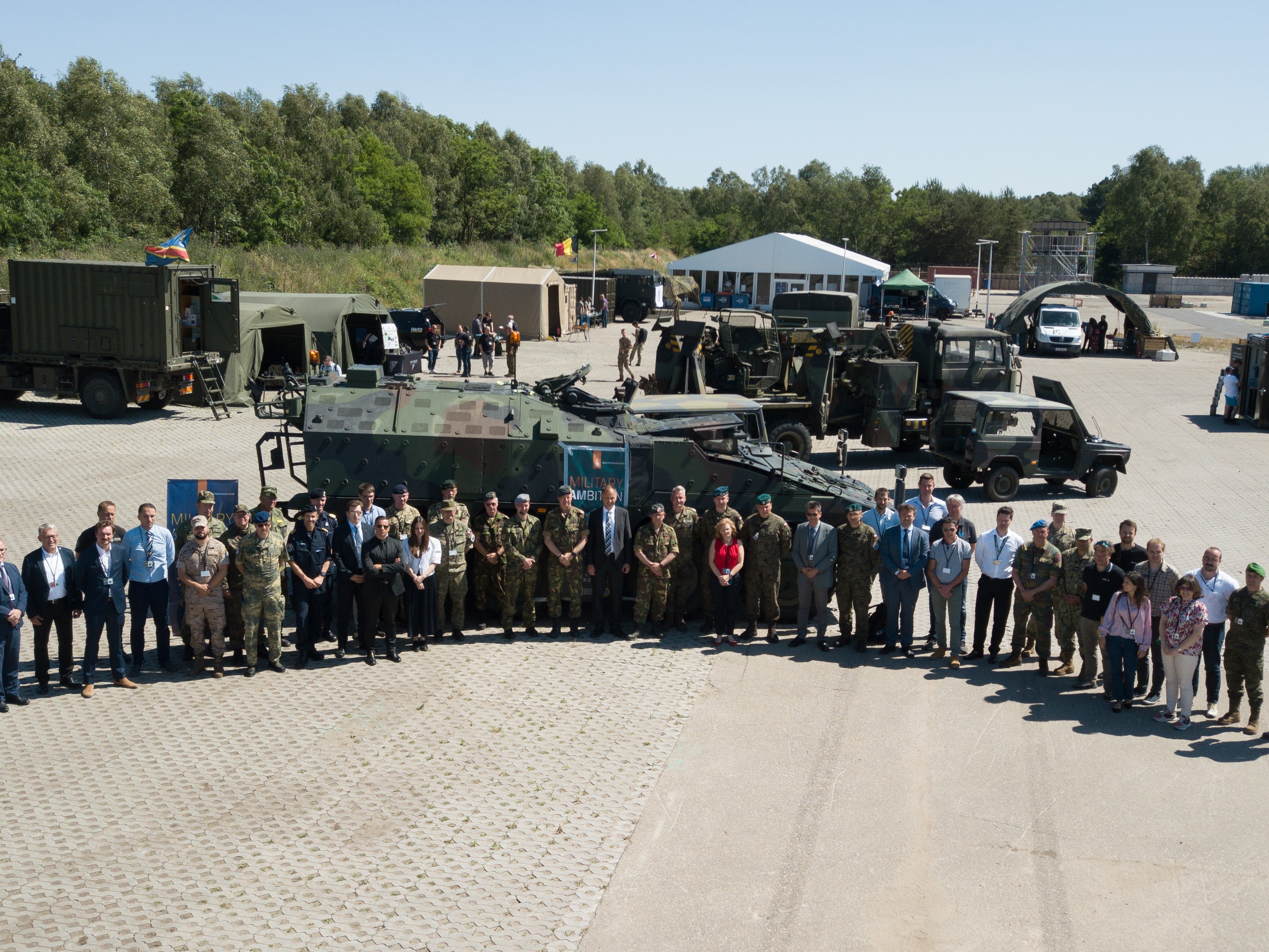What if, during a military operation, a military vehicle's component, such as a door, breaks? Assuming stockpiles are unavailable, ordering replacement parts would take weeks, rendering the vehicle unusable, costing a significant amount of time, and jeopardising the mission’s effectiveness. Having an Additive Manufacturing (AM) solution in the area of operations could address this challenge by allowing the production of a replacement part on-site, strengthening military supply chains and their resilience while reducing the militaries carbon footprint.
To help identify the appropriate AM technologies, which include 3D printing for the military sector, determine common standards for deployable AM, and foster cooperation between European industry and armed forces, the European Defence Agency (EDA) launched the Additive Manufacturing Village 2023 (AM Village 2023). The pioneering event, which took place from 12 to 16 June in Ede, the Netherlands, marked the first major military AM capability development workshop in Europe, bringing together industry professionals, academics, and military experts from all over Europe. AM Village 2023 welcomed over 250 representatives from 14 nations and 21 industrial entities during the week-long workshop.
AM Village showcased the capabilities and potential of implementing AM in the Armed Forces during a dedicated Distinguished Visitor’s Day, which welcomed EDA Deputy Chief Executive André Denk, the Netherlands Lieutenant. General and Chief of the Army Martin Wijnen, Brigadier General Henry Bouman Chief of the Netherlands Logistic Task Force, and MLCC Director Jakub Hrdina. Furthermore, during a dedicated ceremony that same day, EDA Deputy Chief Executive André Denk, and MLCC Director Jakub Hrdina signed an Exchange of Letters formalising cooperation between EDA and MLCC, with both entities co-organising AM Village 2023.

Overcoming Barriers and Expanding Additive Manufacturing's Role
Despite AM technology not having reached the full capability scale, it presents numerous opportunities for the defence sector. From polymer to composite together with carbon, metal, titanium and aluminium, AM can apply a wide range of materials, allowing more flexibility and advantages to improve rapid repairs during operations, while increasing operational effectiveness and readiness of European armed forces.
While having been exploited by a few Member States, like France, Germany and the Netherlands which used AM in military operations in Mali and Afghanistan, AM application in European armed forces remains limited. Several barriers, such as Member States' regulatory frameworks requiring different qualifications and certifications, have prevented the integration of AM in military operations. Additionally, most armed forces are still in the early stages of experimentation, with some Member States still in an academic or research stage.
AM Village 2023 provided a forum to assist European armed forces in developing use cases for AM in deployed missions, where the use of 3D printing by European armies could help save time, strengthen the logistical chain, and consequently reduce costs. Live demonstrations concentrated on identifying the optimal technologies and materials for military use cases, ensuring their suitability and appropriateness.
AM Village also hosted several academic seminars focused on the development of common standards, aligning with the goals of EDA’s Cat B Project Additive Manufacturing for logistic Supply (AMLS). By emphasising collaboration and exchange of knowledge, the workshops aimed to help accelerate the adoption and implementation of AM in the Armed Forces. AM Village reinforced the synergies between key stakeholders of the European AM community with the end goal to establish common standards, certifications, and training.
It takes a village
During this first edition of the AM village, EU armed forces had the chance to present their expertise, experience, and equipment and discuss directly with defence industry professionals and academics to describe their requirements. One of the many successful interactions between AM Village participants is exemplified in the Czech armed forces quadcopter drone, originally developed by the Brno University of Defence. During AM Village, the Czech delegation collaborated with six other national military deployment and industry delegations, reprinting over 80% of the drone’s component, re-assembling the drone with these original parts, and conducting a successful test flight.
The key lessons learned from the event include the need to accelerate the elaboration of European military AM standards, further elaborating at which lines in the area of operations AM use is most efficient and realistic, and further defining specific use cases for each line. Finally, developing and sustaining dialogue and interactions between European military AM stakeholders through a consolidated European AM community.
AM Village 2023 also marked the launching-pad for the CAT B AMLS, the EDA’s project over the next 10 years aiming to develop European military AM standards on six major work strands (Technology, Processes, Legislation & Regulation, Quality Management, Personnel and Education, Information Management and IT).
The progress and lessons from the AM Village, will also be taken forward in the 2nd edition of the European Additive Manufacturing Symposium, which will take place in Bonn, Germany, on 17-18 October 2023.